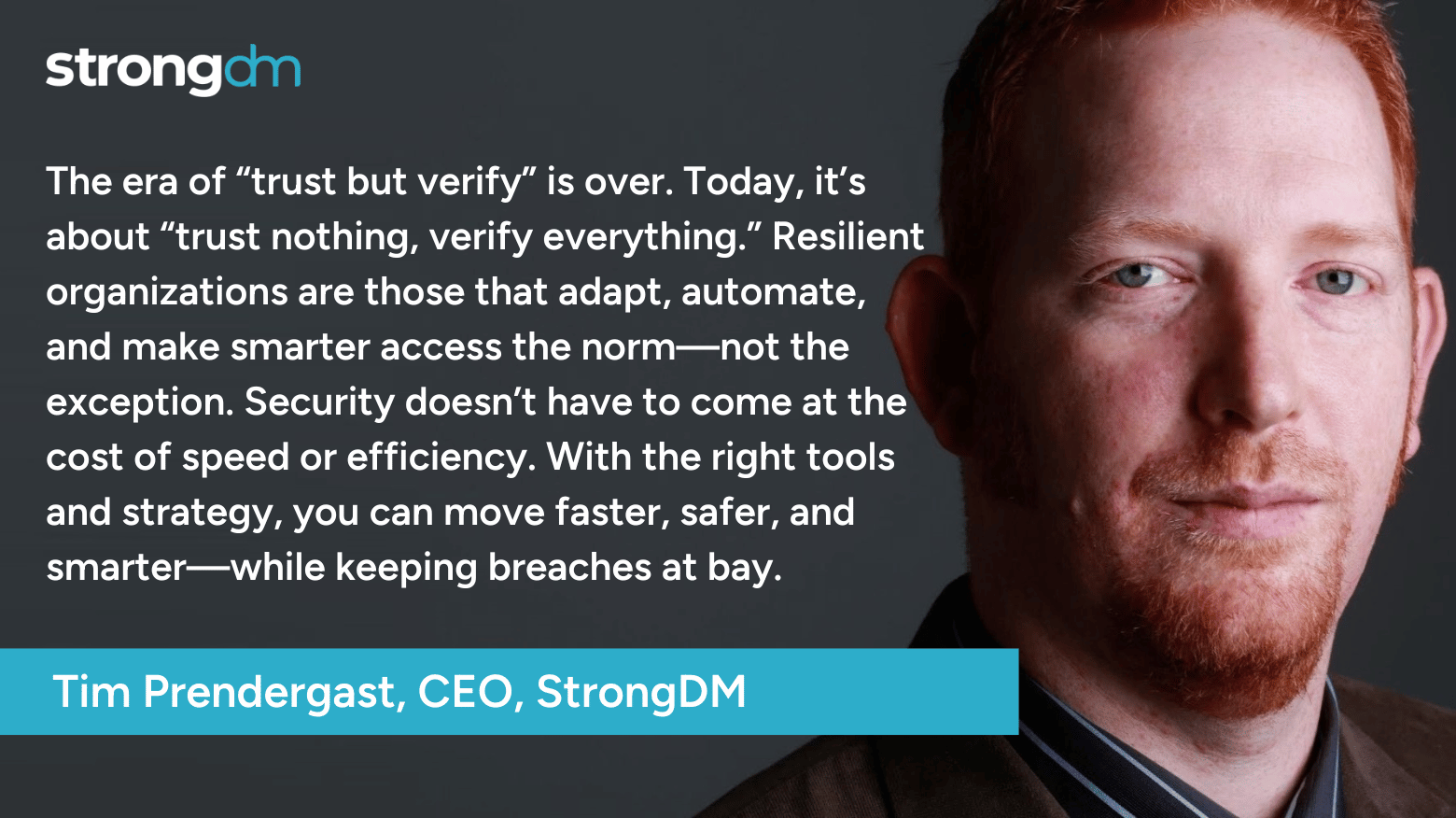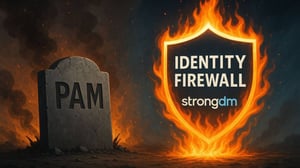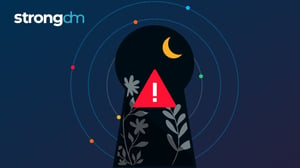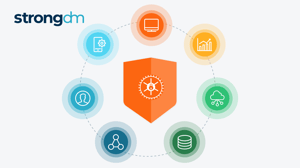There Will Be Breaches: A 2025 Blueprint for Smarter Access


Written by
Tim PrendergastLast updated on:
January 3, 2025Reading time:
Contents
Built for Security. Loved by Devs.
- Free Trial — No Credit Card Needed
- Full Access to All Features
- Trusted by the Fortune 100, early startups, and everyone in between
Let's face a sobering reality: there will be breaches in 2025. Breaches aren’t a question of “if” anymore—they’re a question of “when” and “how bad.” It’s a foregone conclusion, like taxes or the 37th season of Grey’s Anatomy. But here’s the good news: knowing the inevitability of breaches gives us the perfect opportunity to prepare, if we have the will – and strategy – oh, and tools – to do it. And no, I’m not talking about the “build a bunker and buy 1,000 cans of beans” kind of preparation. I’m talking about a smarter, modern approach to managing access.
In 2025, enterprises will be staring down a perfect storm of complexity. Infrastructure spans multi-cloud setups, legacy systems cling to life like old VHS tapes, and the sheer number of users needing access grows faster than you can say “shadow IT.” The tools we’ve historically relied on—VPNs, static passwords, and over-permissioned accounts—have become liabilities, and we have to recognize that. It’s time to admit that legacy access management solutions are like applying a bandaid to someone who has the measles. They were made for a different time and for different needs, and they’ve become completely outmatched by the scale and complexity of today’s challenges.
We think you deserve better. Since access is the foundation for your security strategy, we want you to have an access strategy that aligns with modern needs, but can also be customized to fit your specific enterprise’s needs. Consider this to be a manifesto for smarter access. It’s the antidote to the chaos, the map to navigate this infrastructure jungle. And it starts with facing the facts: breaches will happen, but with the right approach to access, you can minimize the blast radius and stop being the low-hanging fruit attackers love.
The Access Management Reality Check
The IT landscape of 2025 looks something like this:
- Multi-cloud environments: Your infrastructure is probably scattered across AWS, Azure, and that “temporary” Google Cloud instance someone spun up in 2018 and never decommissioned.
- Legacy systems: You’ve still got critical workloads running on systems that predate the smartphone. And for some reason, the deal with that vendor seems to get re-up’ed every few years and it’s your problem to deal with.
- Hybrid work: Your workforce is everywhere—in the office, at home, and sometimes in coffee shops with questionable Wi-Fi.
- Shadow IT: Employees are finding ways to work around your rules, adopting unauthorized tools faster than you can say “compliance violation.”
Now, overlay all this complexity on top of the limitations of legacy access management solutions. VPNs create bottlenecks, static credentials are a hacker’s playground, and overly permissive accounts mean that a single compromised user can wreak havoc. It’s not acceptable, but it’s far too common.
Legacy PAM Solutions: What’s Broken
Legacy access management solutions have held on for far too long, like a flip phone in a world of smartphones. They’ve been patched, stretched, and duct-taped to keep up with modern demands, but at their core, they’re just not built for today’s complexities. Here’s a closer look at the critical flaws that make them unfit for the task:
- Over-provisioning: With legacy solutions, users often get more access than they need—“just in case.” It’s like giving your intern the master key to the office.
- Static passwords: Passwords are the low-hanging fruit of cybersecurity. They get guessed, phished, or brute-forced. And worst of all, they’re usually something like “Spring2023!” and just sitting in a PDF file in 1Password or Slack.
- Lack of visibility: Traditional tools often fail to provide real-time insights into who accessed what, when, and why. You’re left playing detective after something goes wrong.
- No scalability: Legacy solutions can’t keep up with today’s dynamic environments. They’re built for a world where everyone worked in an office and “cloud” was something you saw in the sky.
The Path Forward: Smarter Access in 2025
Now, even though breaches are inevitable, enterprises that have adopted a Zero Trust approach to access are able to limit their impact and make it as hard as possible for attackers to do damage. Here’s their blueprint for smarter access management:
Implement Just-In-Time (JIT) Access
Grant access only when it’s needed, and revoke it as soon as the job’s done. No exceptions. This isn’t a trust fall; it’s business. JIT access reduces the attack surface by ensuring that permissions are as dynamic as your infrastructure.
Example: An engineer needs database access for an hour to troubleshoot an issue. With JIT, they get that access—and only that access—and it’s automatically revoked once the task is complete. No lingering permissions, no loose ends.
Use Context-Based Authorization
Static access policies are as outdated as dial-up internet. Modern access decisions should be based on dynamic signals: device posture, location, intent, and even behavior.
Example: A login attempt from an unrecognized device in an unusual location triggers additional verification steps. If the context doesn’t check out, access is denied.
Embrace Passwordless Authentication
Passwords are the relics of a bygone era. They’re easily compromised, reused across accounts, and frankly, a pain for users. The future is passwordless: biometrics, hardware keys, or secure single sign-on (SSO).
Example: Employees log in with hardware tokens or biometric scans. No more sticky notes with passwords under keyboards.
Continuous Monitoring and Action Control
Visibility is your best friend. Monitor access sessions in real-time and have the ability to intervene instantly if something doesn’t look right.
Example: During a live session, an engineer’s activity starts deviating from normal patterns—access is immediately paused, and security is alerted.
Smarter Access for a Resilient Future
Breaches are inevitable—but they don’t have to be your reality. The key to staying ahead in 2025 is implementing precise, frustration-free access that scales seamlessly with your infrastructure. Zero Trust principles like Just-In-Time (JIT) access, context-aware authorization, passwordless workflows, and continuous session monitoring aren’t just strategies—they’re necessities.
By embracing these approaches, you can eliminate password vulnerabilities, enforce tighter controls, and monitor every session in real time. The result? Reduced risk, simplified operations, and a security posture that doesn’t slow down productivity.
The era of “trust but verify” is over. Today, it’s about “trust nothing, verify everything.” Resilient organizations are those that adapt, automate, and make smarter access the norm—not the exception. Security doesn’t have to come at the cost of speed or efficiency. With the right tools and strategy, you can move faster, safer, and smarter—while keeping breaches at bay.
Ready to replace legacy bottlenecks with smarter, modern access? Book a demo today and see how StrongDM can future-proof your security.
Next Steps
StrongDM unifies access management across databases, servers, clusters, and more—for IT, security, and DevOps teams.
- Learn how StrongDM works
- Book a personalized demo
- Start your free StrongDM trial

Categories:

About the Author
Tim Prendergast, Chief Executive Officer (CEO), before joining StrongDM, Tim founded Evident.io—the first real-time API-based cloud security platform. In 2018, Palo Alto Networks (PANW) acquired Evident.io, and Tim joined the executive team at PANW. As the first Chief Cloud Officer, Tim helped outline GTM and product strategy with the C-suite for the cloud business. Tim also served as the principal architect for Adobe's Cloud Team, designing and scaling elastic AWS infrastructure to spark digital transformation across the industry. Tim’s love for innovation drives his interest as an investor in true market disrupters. He enjoys mentoring startup founders and serving as an advisor.
You May Also Like




